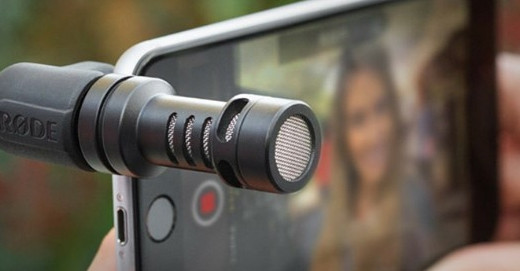Practical tips for reporters shooting video with smartphones
Reprinted from GateHouse Newsroom
We know video is critical to our success as newspapers, as its popularity increases for mobile audiences and our traffic skews mobile.
And we've written about how to change your workflow to add more video, and how GateHouse newsrooms are using Tout in a variety of ways.
Increasingly, we're relying on our smartphones to provide video content. So for photographers looking for a more nimble approach than lugging out the SLR and uploading big files, to reporters armed only with the camera in their pocket, here are 11 tips on how to shoot better using the one device that's never out of your reach.
1. Do not use the zoom feature. Using your phone's zoom feature destroys the quality of your video – both for picture and for sound. If you're not close enough, zoom in by using your feet.
2. Lock your exposure. You don't want your phone's camera switching focus as your shoot. If you're unfamiliar with this, here are instructions.
 StayblCam Smartphone Video Stabilizer
StayblCam Smartphone Video Stabilizer
3. Get a stabilizer. Your hands are never as steady as you think they are. Stabilizing your video will make it look much more professional. You can achieve this with a (relatively) inexpensive stabilizer – here's one for under $100. Or you can use your environment. Steady your hands on a desk, a car, a table, etc.
4. DO NOT SHOOT VERTICAL VIDEO. It is more comfortable and natural to hold your phone vertically, but this makes for really poor user experience. Here's a quick PSA on why you should flip that camera.
5. Clean your lens. Cell phones are basically the dirtiest things on the planet. There's a good chance your lens has a thin veneer of filth on it, obstructing your video.
6. Consider not shooting video. If it's a super short clip you're looking to shoot, would a GIF work better? There are plenty of free apps you can download to create the GIF right on your phone. Loopcam is a good option.
7. Avoid panning. As good as your phone's camera is, it's not meant for rapid panning. Try to capture what you need while holding the camera steady. If you need to show something different, cut and resume. If you absolutely must pan, go very slowly and review your footage before leaving the scene.
8. Choose the right moment. If you're shooting something that moves fast – like a high school basketball game – you're not going to get the same quality shooting with an iPhone. So instead of trying to capture the quick action, pick a better moment. Like when a player is under the net, not moving as fast. Or even a post-game celebration or coach's pep talk.
9. Use an app. There are plenty of free and cheap video apps that will give you features like better focus control and composition guides. Video Camera+ is an example.
10. Consider your light source. Backlighting will make your video look terrible, and it's never as bad in real life as it appears on your screen.
11. Get a microphone for better audio. For interviews, you can go the clip-mic route. But when you're shooting something live or when you can't get quite as close as you'd like, a directional microphone will deliver much better sound quality. Here's one for under $100.
Have other tips? Share them below!
Carlene Cox is a member of GateHouse Media's News & Interactive division, which provides training and support to newsrooms throughout the country. Cox started at GateHouse in 2007 as an editor with the Suburban Life newspaper group. Prior to that, she was the managing editor of the Tonawanda (N.Y.) News.








